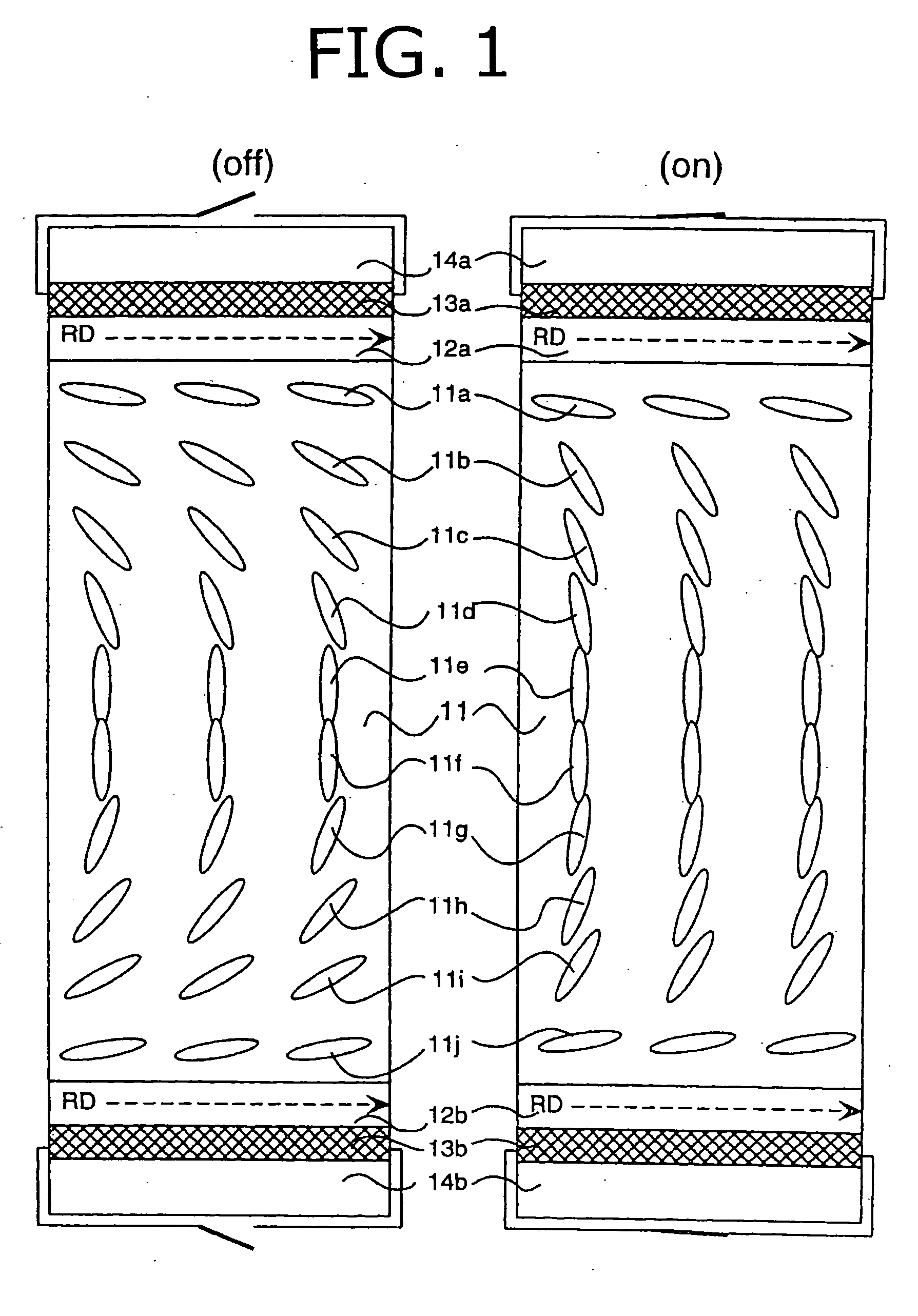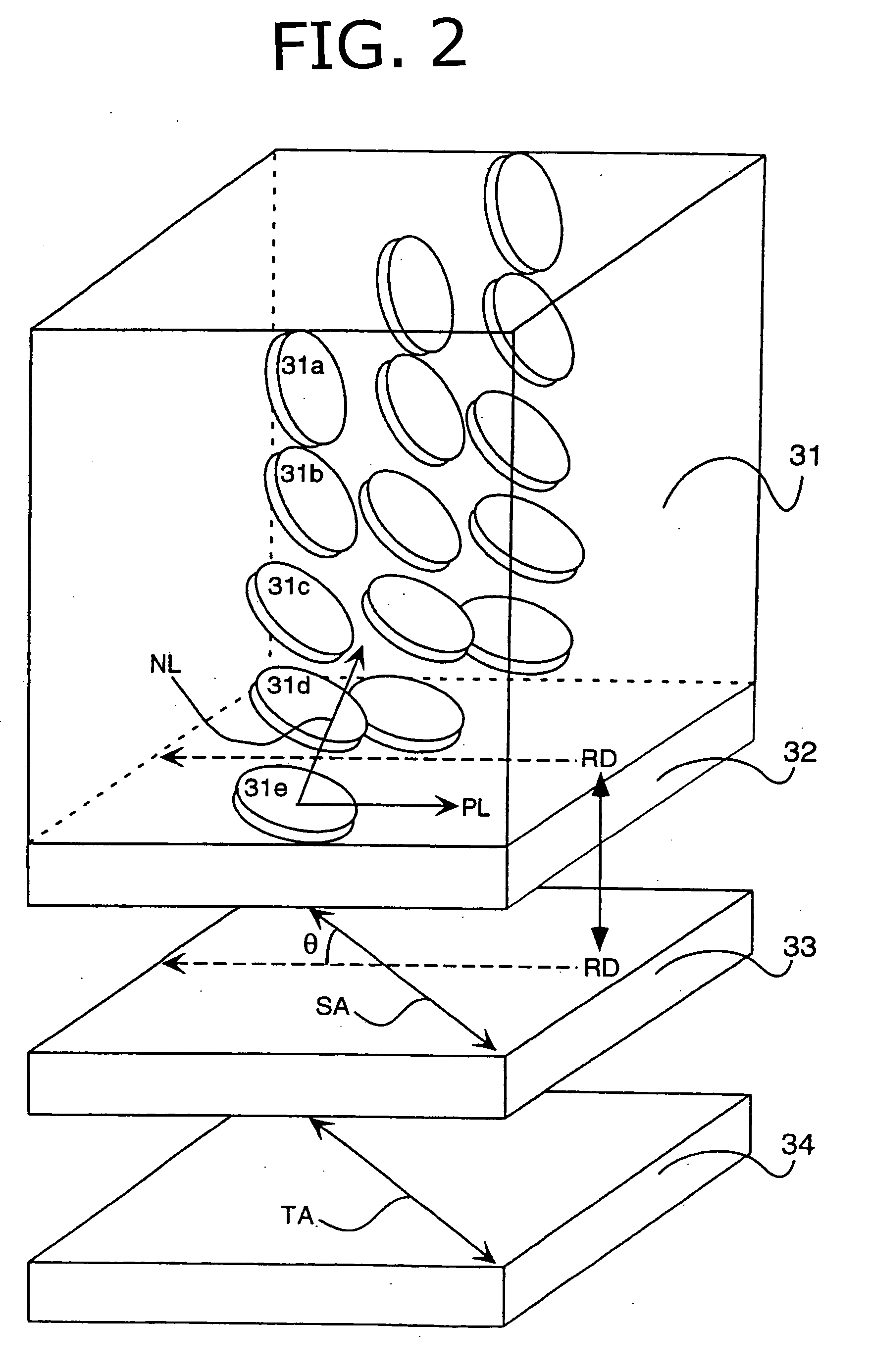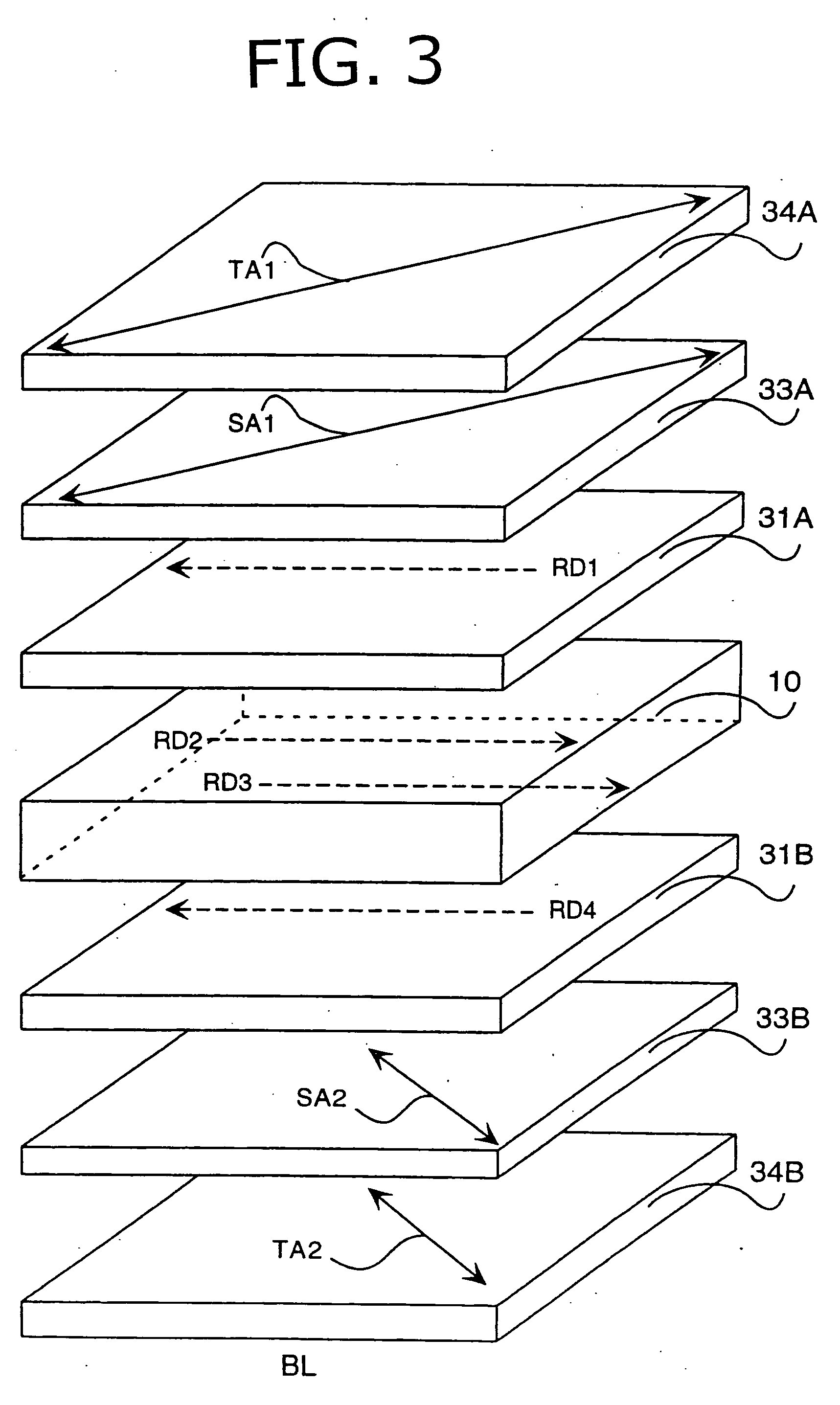Process for preparation of optically anisotropic cellulose ester film
- Summary
- Abstract
- Description
- Claims
- Application Information
AI Technical Summary
Benefits of technology
Problems solved by technology
Method used
Image
Examples
example 1
(Preparation of Cellulose Acetate Solution)
[0267] The following components were placed in a mixing tank, heated and stirred to dissolve, to prepare a cellulose acetate solution.
Cellulose acetate solutionCellulose acetate (acetic acid content: 60.9%)100weight partsTriphenyl phosphate (plasticizer)7.8weight partsBiphenyldiphenyl phosphate (plasticizer)3.9weight partsMethylene chloride (first solvent)336weight partsMethanol (second solvent)29weight parts
(Preparation of Retardation-Increasing Agent Solution)
[0268] In another mixing tank, 16 weight parts of the following retardation-increasing agent, 80 weight parts of methylene chloride and 20 weight parts of methanol were placed, heated and stirred, to prepare a retardation-increasing agent solution.
(Preparation of Cellulose Acetate Film)
[0269] The cellulose acetate solution (477 weight parts) and the retardation-increasing agent solution (52 weight parts) were mixed and stirred well to prepare a dope. The prepared dope conta...
example 2
(Preparation of Cellulose Acetate Film)
[0285] The cellulose acetate solution prepared in Example 1 (477 weight parts) and the retardation-increasing agent solution prepared in Example 1 (21 weight parts) were mixed and stirred well to prepare a dope. The prepared dope contained the retardation-increasing agent in the amount of 2.8 weight parts based on 100 weight parts of cellulose acetate.
[0286] The dope was cast on a band by means of a band-casting machine. When the solvent remaining in the formed film reached 50 wt. %, the film was peeled from the band. After dried until the remaining solvent reached 40 wt. %, the film was laterally stretched by 20% with a tenter at 130° C. and then held to keep the stretched width for 30 seconds at 130° C. The film was then released from the tenter. Thus, a cellulose acetate film was prepared.
(Measurement of Optical Characters and Thermal Conductivity)
[0287] The optical characters and the thermal conductivity of the prepared cellulose acet...
example 3
[0299] (Preparation of Cellulose Acetate Solution)
[0300] The following components were placed in a mixing tank, heated and stirred to dissolve, to prepare a cellulose acetate solution.
Cellulose acetate solutionCellulose acetate (acetic acid content: 60.9%)100weight partsTriphenyl phosphate (plasticizer)7.8weight partsBiphenyldiphenyl phosphate (plasticizer)3.9weight partsMethylene chloride (first solvent)300weight partsMethanol (second solvent)54weight parts1-Butanol11weight parts
(Preparation of Retardation-Increasing Agent Solution)
[0301] The following components were placed in another mixing tank, heated and stirred to dissolve, to prepare a retardation-increasing agent solution.
Retardation-increasing agent solution2-Hydroxy-4-benzyloxybenzophenone (retardation-12weight partsincreasing agent)2,4-Benzyloxybenzophenone (retardation-increasing4weight partsagent)Methylene chloride (first solvent)80weight partsMethanol (second solvent)20weight parts
(Preparation of Cellulose Ace...
PUM
| Property | Measurement | Unit |
|---|---|---|
| Temperature | aaaaa | aaaaa |
| Temperature | aaaaa | aaaaa |
| Fraction | aaaaa | aaaaa |
Abstract
Description
Claims
Application Information
 Login to View More
Login to View More - R&D
- Intellectual Property
- Life Sciences
- Materials
- Tech Scout
- Unparalleled Data Quality
- Higher Quality Content
- 60% Fewer Hallucinations
Browse by: Latest US Patents, China's latest patents, Technical Efficacy Thesaurus, Application Domain, Technology Topic, Popular Technical Reports.
© 2025 PatSnap. All rights reserved.Legal|Privacy policy|Modern Slavery Act Transparency Statement|Sitemap|About US| Contact US: help@patsnap.com



